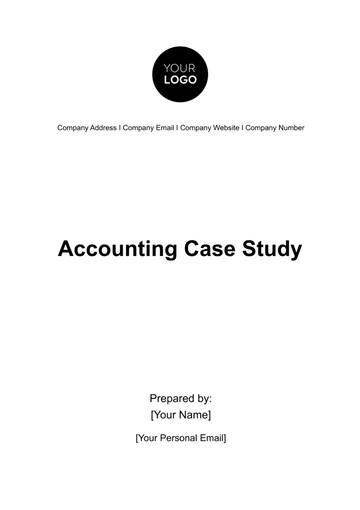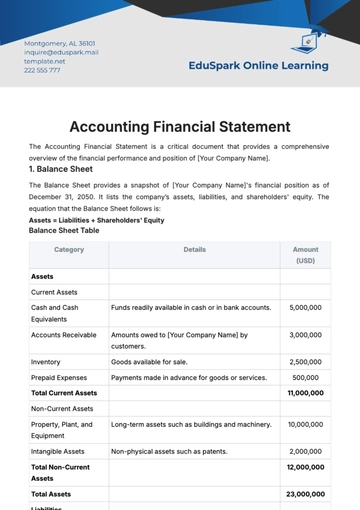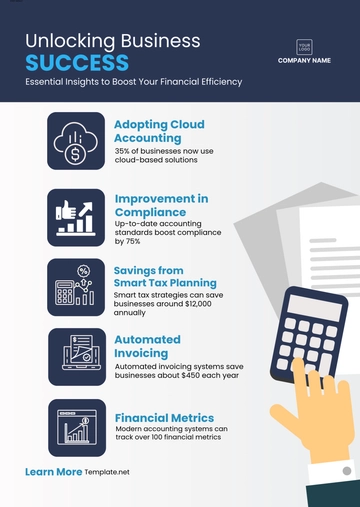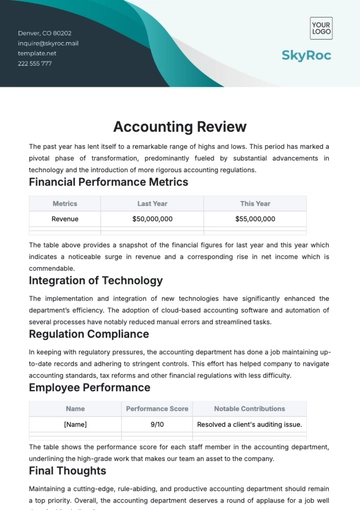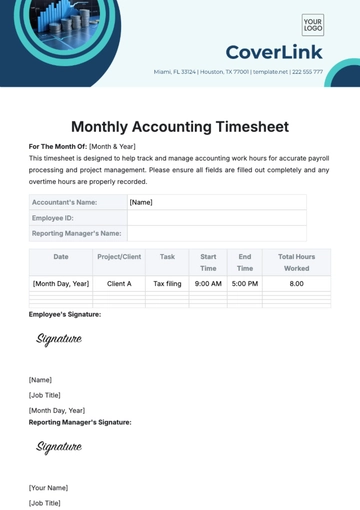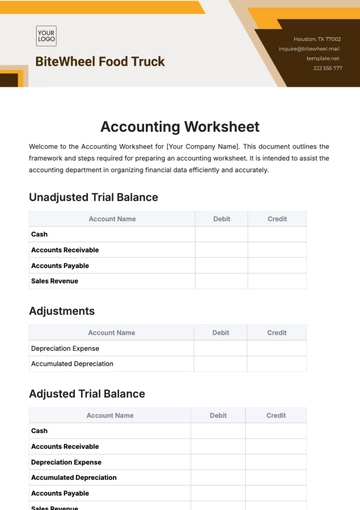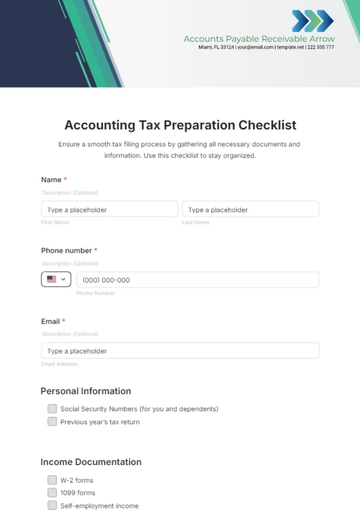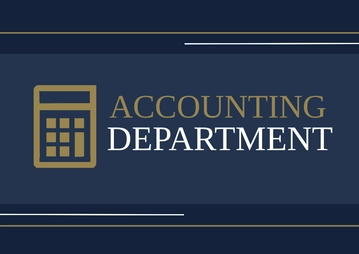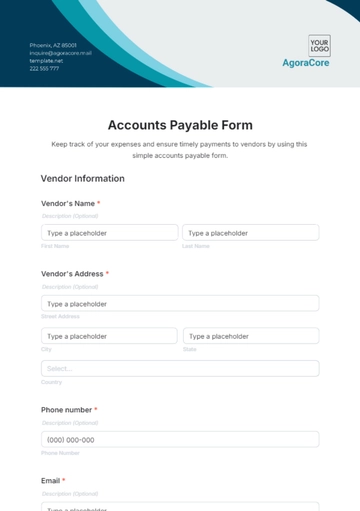Free Account Management Policy
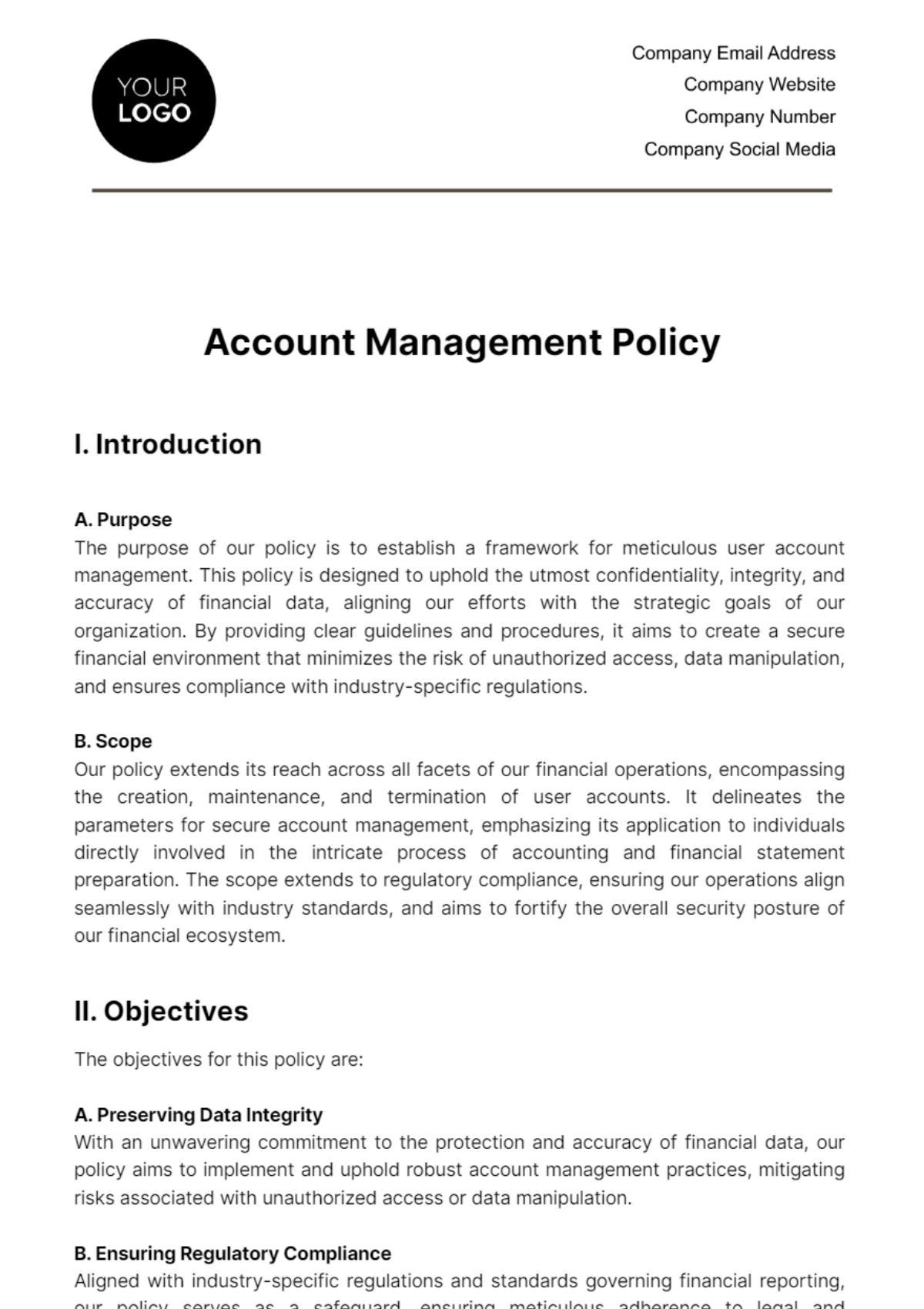
I. Introduction
A. Purpose
The purpose of our policy is to establish a framework for meticulous user account management. This policy is designed to uphold the utmost confidentiality, integrity, and accuracy of financial data, aligning our efforts with the strategic goals of our organization. By providing clear guidelines and procedures, it aims to create a secure financial environment that minimizes the risk of unauthorized access, data manipulation, and ensures compliance with industry-specific regulations.
B. Scope
Our policy extends its reach across all facets of our financial operations, encompassing the creation, maintenance, and termination of user accounts. It delineates the parameters for secure account management, emphasizing its application to individuals directly involved in the intricate process of accounting and financial statement preparation. The scope extends to regulatory compliance, ensuring our operations align seamlessly with industry standards, and aims to fortify the overall security posture of our financial ecosystem.
II. Objectives
The objectives for this policy are:
A. Preserving Data Integrity
With an unwavering commitment to the protection and accuracy of financial data, our policy aims to implement and uphold robust account management practices, mitigating risks associated with unauthorized access or data manipulation.
B. Ensuring Regulatory Compliance
Aligned with industry-specific regulations and standards governing financial reporting, our policy serves as a safeguard, ensuring meticulous adherence to legal and compliance requirements in the realm of financial statement preparation.
C. Optimizing Access Efficiency
Our policy strategically streamlines user access permissions based on distinct job roles within our dedicated accounting and financial statement preparation functions. This objective enhances operational efficiency while minimizing the potential for errors or misuse, supporting the seamless flow of financial processes within our organization.
III. User Account Creation for Financial Personnel
A. Structured Onboarding Process
Facilitate a seamless onboarding process for financial personnel, emphasizing the importance of accurate user information.
Include a checklist for onboarding, ensuring that all required details for account creation are systematically collected.
Provide comprehensive training during onboarding on secure account management practices specific to financial roles.
B. Role-Specific Account Attributes
Customize account attributes based on distinct roles within financial operations.
Implement an automated attribute configuration process, reducing manual errors and ensuring accuracy.
Periodically review and update role-specific attributes to align with evolving job responsibilities.
IV. Access Permissions for Financial Data
A. Need-to-Know Basis Access
Enforce the principle of least privilege, granting access to financial data only as necessary for job functions.
Automate access reviews every quarter, ensuring that permissions align with current roles and responsibilities.
Implement a notification system for immediate identification and rectification of any unauthorized access attempts.
B. Multi-Layered Access Controls
Integrate multi-layered access controls, including biometric verification and secure token authentication.
Regularly assess and update access controls, adapting to emerging security standards and potential threats.
Conduct annual training sessions on utilizing and understanding the multi-layered access control system.
V. Authentication Protocols for Financial Systems
A. Secure Login Mechanisms
Enforce secure login mechanisms, including mandatory multi-factor authentication for all financial personnel.
Conduct bi-annual security drills to ensure that financial staff are proficient in secure login procedures.
Periodically update and strengthen password policies, incorporating industry best practices.
B. Regular Security Audits
Conduct quarterly security audits of authentication protocols, employing external experts for unbiased assessments.
Document audit findings, track corrective actions, and provide a summary report to the executive team.
Implement a continuous improvement process based on audit recommendations to enhance overall system security.
VI. Financial Data Protection
A. Confidentiality Guidelines
Never share login credentials or access information with unauthorized individuals.
Encrypt sensitive financial data during transmission and storage to prevent unauthorized access.
Limit discussions about financial matters to designated and secure areas within the organization.
Report any suspected security breaches or incidents promptly to the designated authority.
B. Data Handling Best Practices
Regularly update passwords and access credentials following company policies.
Use secure and approved channels for the transmission of financial data.
Store physical documents containing financial information in locked and access-restricted areas.
Dispose of outdated financial records in accordance with the company's document retention and destruction policies.
VII. Modification and Review of Financial Accounts
A. Account Modification Procedures
Submit a formal request for any modifications to financial accounts, detailing the required changes and justifications.
Obtain explicit written authorization from designated personnel before implementing any modifications.
Maintain a comprehensive log of all account modifications, including the date, authorized personnel, and the nature of the changes.
Conduct quarterly reviews of modified accounts, comparing records to identify and rectify any inconsistencies.
B. Periodic Account Reviews
Semi-annually review user access permissions, ensuring alignment with current job roles and responsibilities.
Utilize automated tools to generate reports highlighting any unusual or unauthorized access patterns.
Document and address any findings during the review process, maintaining a thorough record of access reviews.
VIII. Termination Procedures for Financial Personnel
A. Prompt Account Termination
Upon employee departure, terminate access to financial systems within three business days.
Disable or revoke all associated credentials promptly to prevent any lingering access.
Conduct exit interviews to collect feedback and ensure a smooth account termination process.
Document and archive terminated account details for auditing and record-keeping purposes.
B. Exit Interviews
Include questions related to account access and security during exit interviews.
Provide departing employees with a clear understanding of their responsibilities regarding the confidentiality of financial information.
Use exit interview feedback to enhance the account termination process and address any identified gaps.
IX. Monitoring and Auditing Financial Accounts
A. User Activity Monitoring
Implement real-time user activity monitoring tools to track access and actions related to financial data.
Establish automated alerts for suspicious activities, triggering immediate investigation and response.
Conduct monthly reviews of user activity logs to identify patterns or anomalies that may indicate unauthorized access.
B. Compliance Audits
Conduct semi-annual compliance audits to ensure adherence to financial policies and industry-specific regulations.
Engage external auditors for an unbiased evaluation of compliance measures and identify areas for improvement.
Document and communicate audit outcomes, including any recommended actions, to the relevant stakeholders.
- 100% Customizable, free editor
- Access 1 Million+ Templates, photo’s & graphics
- Download or share as a template
- Click and replace photos, graphics, text, backgrounds
- Resize, crop, AI write & more
- Access advanced editor
Establish robust account management policies with the customizable Account Management Policy Template, accessible on Template.net! This editable template sets the standard for efficient and compliant account management. Write easily with our AI Editor Tool, ensuring that policies align with your organizational goals. Strengthen your account management framework with precision now!









